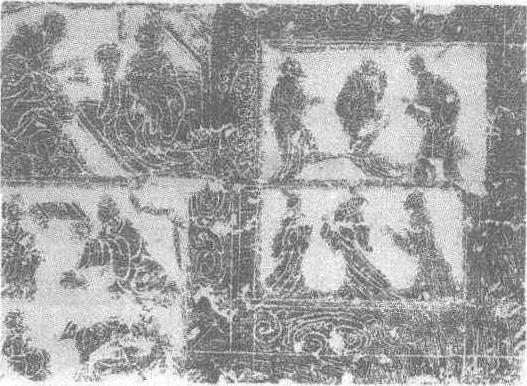宴饮画像石
东汉末至三国。长53厘米,宽30厘米。1973年浙江省海宁市长安镇发现,浙江省海宁市博物馆藏。剔地平面浅浮雕、阴线法刻成。画面被卷云分割成两部分:右边上部为墓主人坐于榻上与榻下二人交谈的情景,下部为两人踞坐案边,相对宴饮图。左边上下两部分均为三人闲聊图。

| 词条 | 宴饮画像石 |
| 类别 | 中文百科知识 |
| 释义 | 宴饮画像石东汉末至三国。长53厘米,宽30厘米。1973年浙江省海宁市长安镇发现,浙江省海宁市博物馆藏。剔地平面浅浮雕、阴线法刻成。画面被卷云分割成两部分:右边上部为墓主人坐于榻上与榻下二人交谈的情景,下部为两人踞坐案边,相对宴饮图。左边上下两部分均为三人闲聊图。
|
| 随便看 |
开放百科全书收录579518条英语、德语、日语等多语种百科知识,基本涵盖了大多数领域的百科知识,是一部内容自由、开放的电子版国际百科全书。